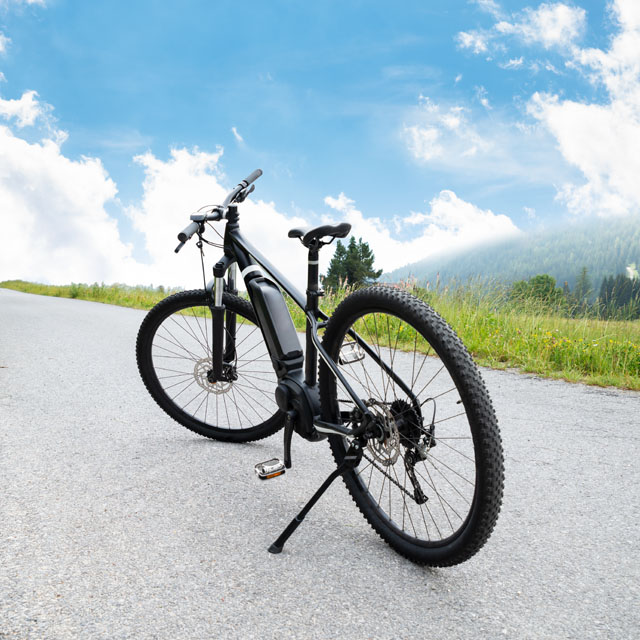Precautions When Choosing A Mobility Battery Charger
The global e-scooter market is worth around $18.6 billion globally, and purchases of such electric vehicles have risen steadily since 2016. As you can imagine, e-scooters and e-bikes give people an innovative and eco-friendly way to travel in their local areas.
Of course, the battery packs within e-scooters and e-bikes need charging once power gets depleted in those electric vehicles.
Why use mobility battery chargers?
When the power level drops in a powered vehicle such as an e-scooter or e-bike, the batteries will need recharging. The great thing about using such powered transport is you can simply recharge the batteries from a standard power outlet.
All you need to do is plug in the charging cable into the wall socket, and your powered electric vehicle’s batteries will begin recharging. It’s a process that everyone is familiar with and one that doesn’t get much afterthought.
If you don’t use a mobility battery charger with your plug-in vehicle, you’ll soon find that the batteries’ voltage levels will drop to unusable levels. And that ultimately means you’ll have to walk everywhere or be unable to travel very far from your home.
A mobility battery charger will help you avoid that problem by safely recharging the batteries on your powered e-scooter or e-bike. Such chargers convert the power from your mains wall socket (AC electricity) into DC electricity.
It’s crucial to use the right mobility battery charger with your powered vehicle to avoid damaging the batteries or potentially causing a fire or explosions.
Mobility battery charger applications
As you may have gathered, the main application for a mobility battery charger is electric vehicles such as:
- Electric scooters (e-scooters);
- Electric bicycles (e-bikes).
It’s worth noting that the batteries come in various sizes, configurations, and power capacities. Therefore, no universal AC adapters can reliably and efficiently charge all your household electric vehicles.
That’s why it makes sense to use a mobility battery charger exclusive to your specific application. Electric vehicles such as e-scooters and e-bikes may use one battery, but some of the more powerful models on the market may use two, three, or more linked together.
The definition of a mobility battery charger
Mobility vehicles such as e-scooters and e-bikes get primarily designed for domestic use. As such, the way they operate and get maintained must be within the scope of most individuals.
The good news is a mobility battery charger isn’t a complicated, cumbersome, or inefficient device. In a nutshell, a mobility battery charger is an AC adapter that is sleek, portable, energy-efficient, and easy to store when not in use - a bit like a laptop charger.
As you know, DC batteries get used in mobility vehicles, whereas your mains-supplied household electricity is between 100 V AC and 240 V AC, depending on where you live in the world. To charge your batteries, you need to convert mains electricity to meet the battery specification.
An AC adapter takes the incoming voltage from your mains-supplied electricity and converts that energy into DC output power. Without such a conversion, you will damage your batteries and possibly cause them to explode or catch fire.
The components of a mobility battery charger typically include:
- Rectifier - converts AC (Alternating Current) electricity to DC (Direct Current);
- Transformer - causes the input voltage (120 V to 240 V) to “step down” to DC output voltage;
- Filter - filters out any electrical ‘noise’ from the input voltage to produce ‘clean’ output voltage;
- Connector - allows you to connect the mobility battery charger to your powered vehicle.
Other components may include LED indicator lights, cooling fans, short-circuit, temperature, and reverse polarity protection.
How to choose a mobility battery charger
Some people wrongly assume that mobility battery chargers are interchangeable with other, similar-looking AC adapters. The truth is, a mobility battery charger will only work for specific applications.
The first thing you’ll notice about a mobility battery charger is the connector that plugs into an electric vehicle. While some e-scooters and e-bikes may use identical connectors, you can’t guarantee that other models don’t use different or proprietary connections.
If you try to plug in your laptop’s AC adapter into your powered vehicle, the chances are high that it won’t connect. Even if the connector happened to be the right one, you should never use AC adapters from different devices or equipment.
With all that in mind, how can you choose the right mobility battery charger for your needs? Here are a few things to consider before beginning your search:
- Output voltage and wattage - you must check the electrical specification of your powered vehicle to ensure the right choice;
- Input voltage - each country uses different mains voltage and Hz rates;
- Charging rate - the higher the amp rating, the faster your batteries will get charged.
Another thing to consider is the brand name of your mobility battery charger. FSP Group manufactures high-quality, highly-efficient mobility battery chargers with various specifications to suit your needs.
Why choose FSP Group mobility battery chargers?
When you know the electrical specification of your application, what should you do next? Well, the next stage is finding a compatible mobility battery charger that best meets your needs.
You must select a mobility battery charger that is compatible and energy-efficient, durable, and portable. Here’s why you should consider anFSP Group mobility battery charger:
Quality and safety assurance
FSP Group is a global leader in mobility battery charger technology and manufactures a vast range of compatible chargers. Our products meet stringent internal and external quality and safety standards.
Reputation
We are an industry innovator and have become an OEM supplier to many well-known global brands.
Vast choice of mobility battery charger options
Our broad range of charger options includes theFSP252-10S6AC18 , a 252 W mobility battery charger, and the FSP168-10S4AC8, a 168 W charger. Both chargers are suitable for e-bikes and e-scooters.

